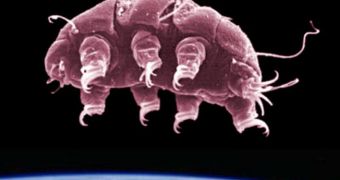One of the main fears that astrobiologists have is that if they send a lander or a rover to another world, it may carry with it microorganisms that would contaminate the results of the investigation, essentially rendering it useless.
Researchers need to be absolutely positive that if they discover a life form on Mars for example, then it's the real deal, and not just some bacteria, microbe or other single-celled organisms from Earth.
At best, the organisms could contaminate the soils, and at worst they could destroy Martian life forms, if there are any. Regardless of where a rover will be go, it will not find native life.
Needless to say, if space agencies put so much money in constructing missions such as NASA's Mars Science Laboratory (MSL), then they would do well to protect their investment by avoiding this type of scenario.
In a new scientific paper, a team of researchers suggests an approach that could guarantee no even single-celled salt-lovers and microorganisms called tardigrades don't get to attach themselves to rovers.
These creatures are some of the most resilient life forms that exist on Earth, and they have been proven to withstand the rigors of a tough space travel, even if they get attached to the exterior of the spacecraft.
The research paper, which appears in the latest issue of the esteemed scientific journal Icarus, details a technique that would allow rover builders to eliminate the risk of that happening, Wired reports.
“We might actually select for these organisms. They would be the most likely thing to be able to survive,” explains lead study author and Indiana University graduate student Adam Johnson.
In the experiments he and his colleagues conducted, the researcher collected a host of resilient life forms from various locations around the world, and then placed them inside a simulator that replicated the conditions known to exist on Mars.
Organisms were taken from the Siberian permafrost, briny saltwaters, and cold saline springs, among others. The study included tardigrade, the most resilient multicellular animal in the world. It can survive space travel, as proven on several occasions.
“We threw a lot of organisms at the experiment. A lot of studies just focus on one, but we really just threw the kitchen sink at it,” Johnson says,
Following the experiments, the science team found that tardigrades had the highest percentage of survival in the harsh conditions, mostly because they can slow their metabolism down by a factor of 10,000 when needed.
This means that they can dry up without dying, which is a critical trait on the arid, frozen wasteland that is Mars. Johnson estimates that the organisms could survive conditions on Mars for up to 300 days.
“This is the first study where we’ve actually shown that an organism could potentially last for several hundred days on the surface of Mars,” he adds.
“This paper points out the need for ongoing re-examination and updating of sterilization and detection methods used for planetary protection purposes during cleaning and preparation of spacecraft,” explains SETI Institute expert Margaret Race.
“We are continuing to find microorganisms that surprise us in their hardiness,” concludes the scientist, who specializes in studying how to avoid contaminating Mars with Earth life.

 14 DAY TRIAL //
14 DAY TRIAL //